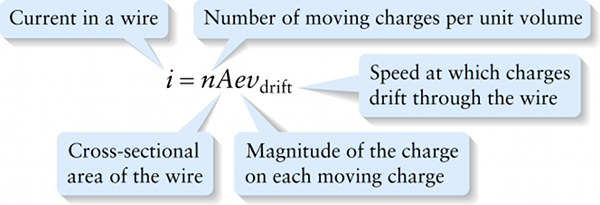Current and drift speed (18-3)
Question 1 of 5
Question
Speed at which charges drift through the wire
{"title":"Current in a wire","description":"Wrong","type":"incorrect","color":"#99CCFF","code":"[{\"shape\":\"poly\",\"coords\":\"82,133\"},{\"shape\":\"rect\",\"coords\":\"10,16,12,16\"},{\"shape\":\"poly\",\"coords\":\"144,22\"},{\"shape\":\"rect\",\"coords\":\"1,10,20,55\"}]"} {"title":"Number of moving charges per unit volume","description":"Wrong","type":"incorrect","color":"#ffcc00","code":"[{\"shape\":\"rect\",\"coords\":\"79,23,114,55\"}]"} {"title":"Speed at which charges drift through the wire","description":"Correct!","type":"correct","color":"#333300","code":"[{\"shape\":\"rect\",\"coords\":\"182,19,213,53\"}]"} {"title":"Magnitude of the charge on each moving charge","description":"Incorrect","type":"incorrect","color":"#ff0000","code":"[{\"shape\":\"rect\",\"coords\":\"155,20,182,54\"}]"} {"title":"Cross-sectional area of the wire","description":"Incorrect","type":"incorrect","color":"#800000","code":"[{\"shape\":\"rect\",\"coords\":\"116,8,151,54\"}]"}Review
Let’s see how to find the magnitude of the magnetic force on a current-carrying wire, such as a segment of the coil in Figure 19-9b. Figure 19-10 shows a straight wire of length ℓ that carries a current i. A magnetic field →B points at an angle θ to the direction of the current, and has the same value along the entire length of the wire. We learned in Section 18-2 that the current in the wire is related to the speed at which individual charges drift through the wire:

